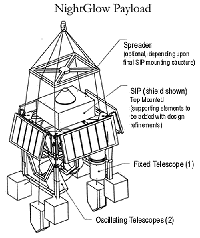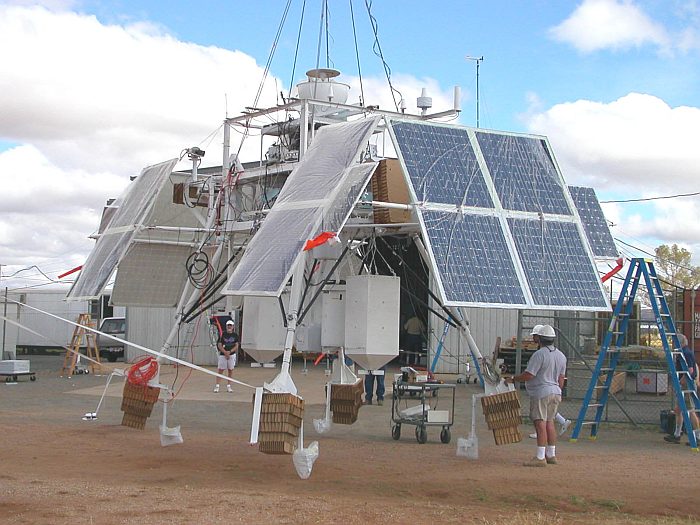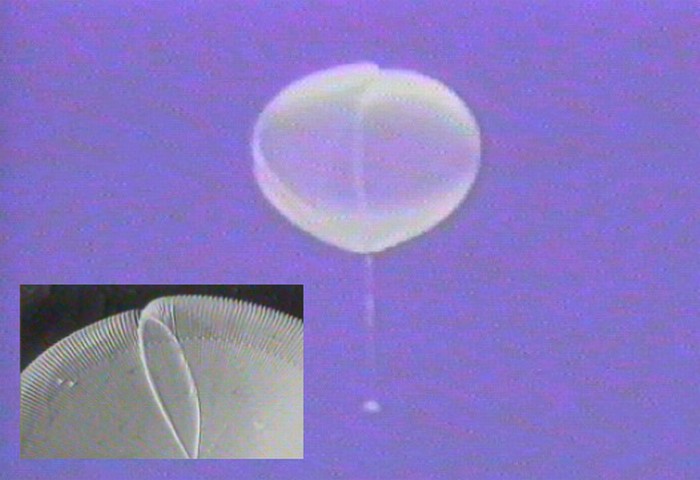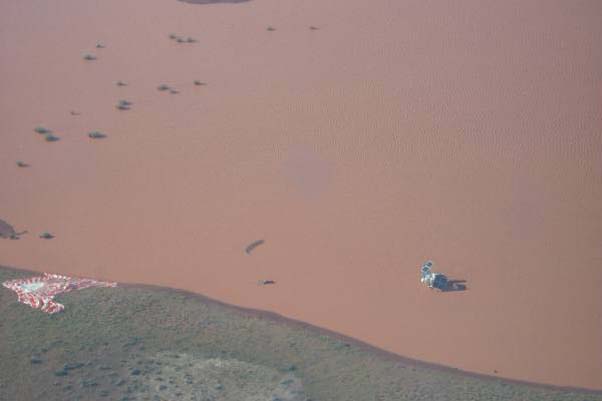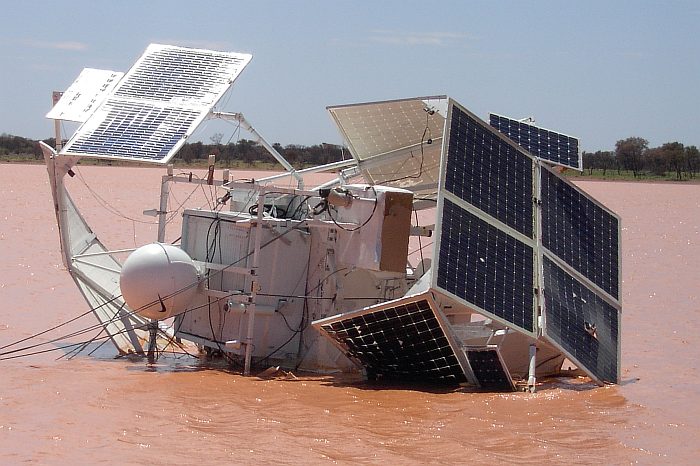Purpose of the flight and payload description
The NIGHTGLOW instrument consists of three telescopes (each has a 14" diameter mirror and a 19" focal length - an f/1.4 design) instrumented with two photomultiplier tubes (PMT). A PMT is a very sensitive device for converting light into an electronic signal.
A filter is used to limit the light entering the telescopes to wavelengths between 300 - 400 nm - in the (invisible) near ultra-violet part of the spectrum.
One of the three main telescopes looks down at all times, while the other two rotate and view the ground, the horizon and the UV glow at high altitudes (above the balloon at ~90 km).
Flying at an altitude of about 30 km (100,000 ft), NIGHTGLOW will circumnavigate the world. During the local night, NIGHTGLOW will use its three onboard telescopes to measure the amount of ultraviolet light produced in the atmosphere, as well as that produced by humans on the ground.
In addition, NIGHTGLOW has two cloud sensing systems onboard to monitor the amount of cloud cover beneath the balloon. One system measures the cloud's temperatures with an infrared camera, and the other system measures the cloud's reflecting properties with a blue laser.
Combining the knowledge of the cloud cover and the light production, NIGHTGLOW will provide valuable data for scientists who are interested in measuring the very highest energy cosmic rays, particles of immense energy that come to us from outside our own Milky Way galaxy. These particles strike our atmosphere and create flashes of invisible ultraviolet light. NIGHTGLOW will help in the identification of these particle flashes, distinguishing them from the background ultraviolet light.
:: The balloon ::
The Ultra Long Duration Balloon (ULDB), is a project to develope a balloon system capable of providing scientific measurements for 100-day missions with floating altitude close to 35km.
It is a super-pressure balloon made of a composite fabric (polyester + polyethylene film and fabric) that is filled with Helium and hermetically sealed. Meridional tendons provide additional rigidity to the envelop. The pressure inside the envelop is maintained above the ambient pressure at all times to keep the balloon afloat at a constant altitude. During daytime the internal pressure increases due to solar heating but the volume remains constant due to the rigidity of the envelop. At night the pressure drops due to infrared radiative cooling to space, but as long as the internal pressure remains above the ambient pressure, the balloon stays at the same altitude.
Transported by stratospheric winds around the globe at 30m/s can circumvent the Earth in about 2 weeks. The balloons are 120 meters in diameter and can carry payloads up to 1500kg.
Details of the balloon flight
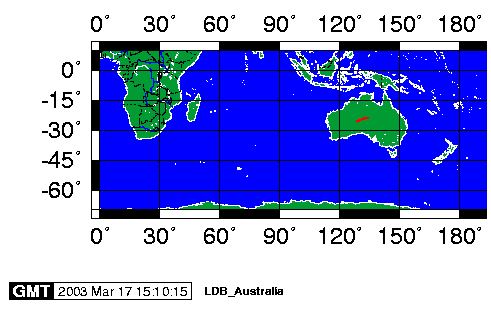
Balloon launched on: 3/17/2003 at 8:38 local
Launch site: Australian Balloon Launching Station, Alice Springs, Australia
Balloon launched by: National Scientific Balloon Facility (NSBF)
Balloon manufacturer/size/composition: Ultra Long Duration Balloon Raven 29SP - 28.000.000 ft3 - SF4-21.56-1.5/1.5-N
Balloon serial number: R21.56-1.5-U1-02
Flight identification number: 517NT
End of flight (L for landing time, W for last contact, otherwise termination time): 3/17/2003 at 10:33 utc
Balloon flight duration (F: time at float only, otherwise total flight time in d:days / h:hours or m:minutes - ): 12 h 13 m
Landing site: 130 miles WSW of Ayers Rock, Australia
Payload weight: 2.717 kgs
After several delays due to poor weather, on March 17th the balloon was launched by dynamic method assisted by a crane as launch vehicle and a tow balloon to help in the inflation process.
Ascent rates were within the expected ranges. The balloon smoothly transitioned into float, and auto-valved function activated to maintain balloon within preflight specified differential pressure limits.
At 11:17 am balloon has reached and leveled off at float altitude of 110,000 feet and appeared to be at full pressure or near it, working as expected.
Along several hours of flight was evident that the balloon was leaking and losing pressure for unknown reasons and its performance was compromised. The fact was confirmed by up looking videos and telescope view of the balloon wich showed that the envelope did not deploy properly.
After reviewing undeployed shape and performance data, the flight was terminated at 10:37 UTC.
The search crew that went out by plane to survey the landing site about 225 nautical miles from Alice Springs found that the payload landed in a small lake formed by heavy rains in the middle of the Australian outback, the balloon landed in the terrain sorrounding.
Took near two weeks to get back to Alice Spring the payload and the parachute/balloon in two separates trips.
In the flight campaign of January/March 2003 were numerous delays waiting by ideal by weather conditions.
Finally the balloon was launched but due to a leak the flight was terminated without getting any scientific data.
The payload was damaged on landing: 3 of the 4 legs were broken , the lidar secondary mirror is just gone, the cover on the fixed telescope was broken, and the main motor/gearbox is broken. All the telescopes along with their mirrors survived the ground impact as well did the main lidar mirror.
External references
- NIGHTGLOW website Goddard Space Flight Center, NASA
- ULDB website - Balloon Programe Office NASA Wallops flight facility
199If you consider this website interesting or useful, you can help me to keep it up and running with a small donation to cover the operational costs. Just the equivalent of the price of a cup of coffee helps a lot.

